User groups
What is a user group?
A user group is a container of individual users, and together they mimic the organisational structure of your company, enabling you to run reports on, and restrict access to, parts of the TIM Plus directory.

The Discovered Users folder
A special user group, Discovered Users, is automatically created in TIM Plus to harvest hitherto-unknown user information from the call data received from your telephone system. Over time, when all possible users have been collected by the Discovered Users folder, you can create your own user groups based on the structure of your organisation, and move users into these new groups.
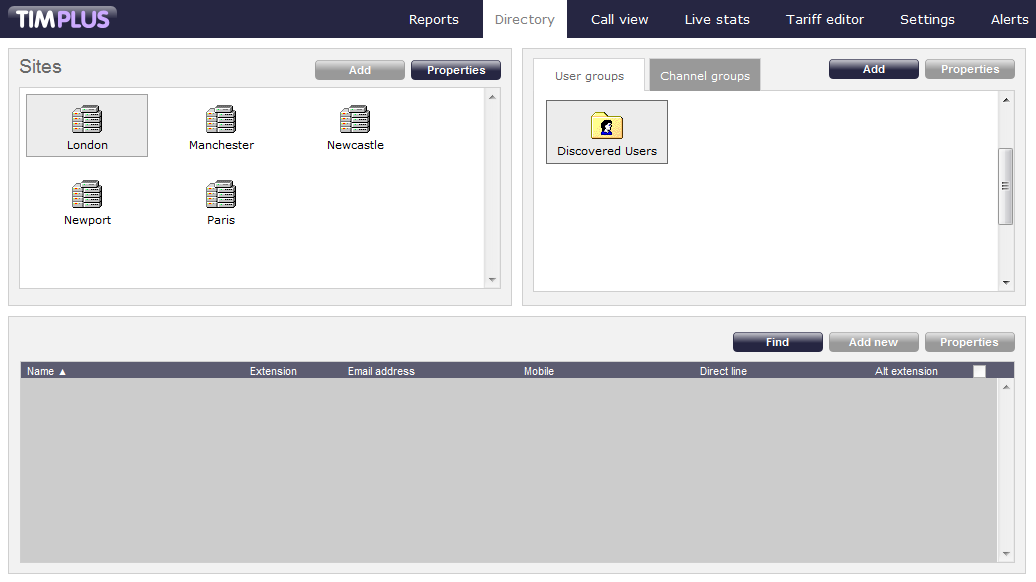
Adding a user group
To add a new user group to the Directory, select the User groups tab from the Groups panel and click on the button.
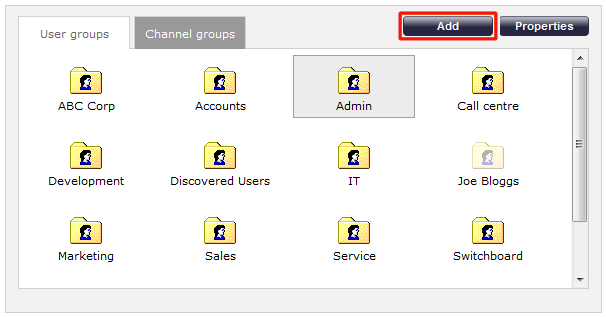
A new window will appear, allowing you to add the name of the group and its associated pilot/hunt group number, if applicable.

Click on the button to add the new group to the Directory.
If you use synchronisation, such as Cisco AXL, you need not manually configure user groups, since TIM Plus automatically imports users from your telephone system, placing them in their respective groups. |
Configuring a user group
To configure the properties of a user group, highlight the group you want to configure and click on the button at the top-right corner of the panel:
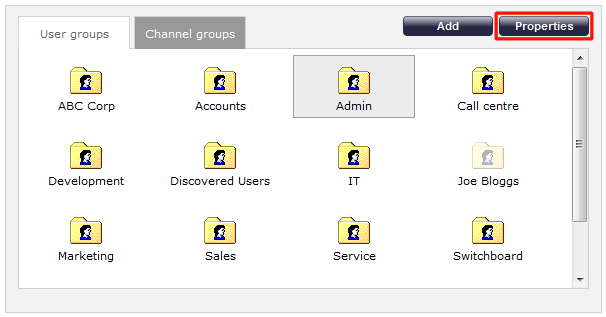
A new window will open, where you can configure the properties of the user group. Each tab in the Group properties window is described below:
General
In the General tab you can edit the name of the user group and its associated pilot/hunt group number, if applicable.

Telephony
The Telephony tab gives you the option to exclude the currently-selected group from being logged by TIM Plus. If call recording integration is enabled, you can also exclude calls from being recorded.
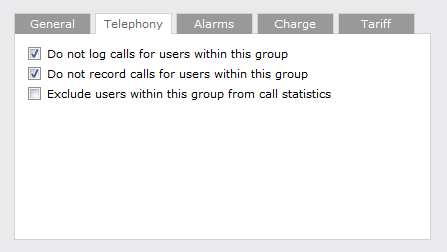
The following options can be enabled or disabled in this panel:
| Option | Description |
|---|---|
| Do not log | Calls to and from this user group will not be logged by TIM Plus. In addition, if integrated call recording is used, no audio recordings will be available |
| Do not record calls | Calls to and from this user group will not be recorded, if integrated call recording is in use |
| Exclude users from call statistics | Collection of statistics will not be performed for calls to and from this user group |
Your software license user capacity does not include users inside groups whose Do not log option is enabled. |
Alarms
TIM Plus can send e-mail alerts when calls whose properties match certain criteria have happened, such as calls above a particular duration, calls to specific phone numbers, or when user-defined cost thresholds are exceeded.
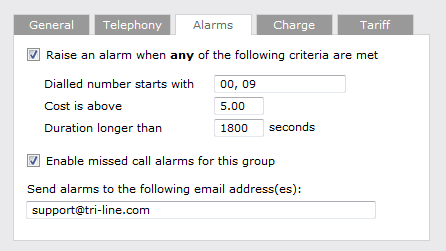
Dialled number alarm
An alarm can be activated when a full or partial number is dialled by any user within the selected group. To add a series of full or partial numbers, separate each one with a comma, as shown above. An example might be 00, 020, 020726526, 02072652600.
Cost alarm
An alarm can be activated when a call made by any user within the selected group exceeds a specific cost.
Duration alarm
An alarm can be activated when a call made by any user within the selected group exceeds a predetermined duration, measured in seconds.
Missed call alarm
E-mail notifications of missed calls can be activated for users in the selected group, by ticking the Enable missed call alarms for this site option.
Delivering the alarm notification
To receive an e-mail notification from TIM Plus about any of the aforementioned alarms, enter the address of the e-mail recipient in the box provided; to send alerts to multiple e-mail addresses, separate each one with a semicolon.
Charge
The Charge tab gives you the ability to add a percentage markup to all calls in the selected group. To apply the charge, enter the percentage by which you would like to mark up calls, as shown below:
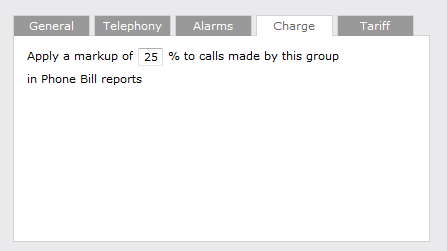
Tariff
The Tariff tab gives you the ability to select a default tariff table to use when costing calls made by users in this group.

By default, TIM Plus is supplied with a standard tariff table for the country of installation, which automatically includes details of national, international and mobile/cellphone dial codes. Bespoke tariffs can also be provided on request. |
Renaming a user group
To rename a user group, locate it in the Directory and click on the button.

A new window will open, where you can specify a new name for the group. Click to apply the changes.
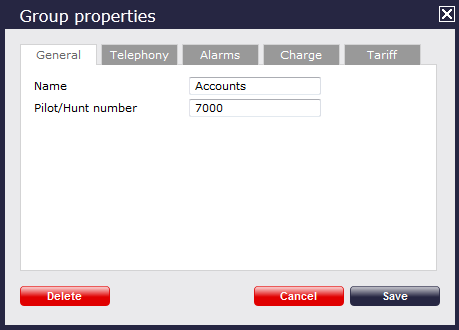
Deleting a user group
When you delete a user group, you are deleting all the information contained within that group, including all users and calls associated with those users! |
To delete a user group from the Directory, select the group you want to remove and click on the button.
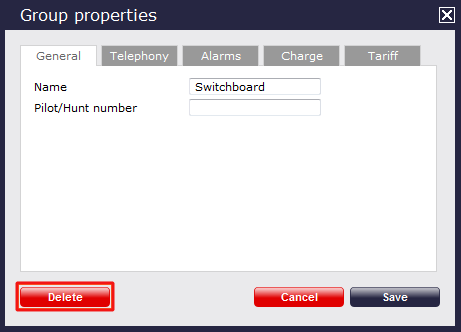
The Group properties window will appear. Click on the tab at the bottom-left of the window to remove the group from the Directory; a confirmation will be required, to prevent the group being deleted accidentally.